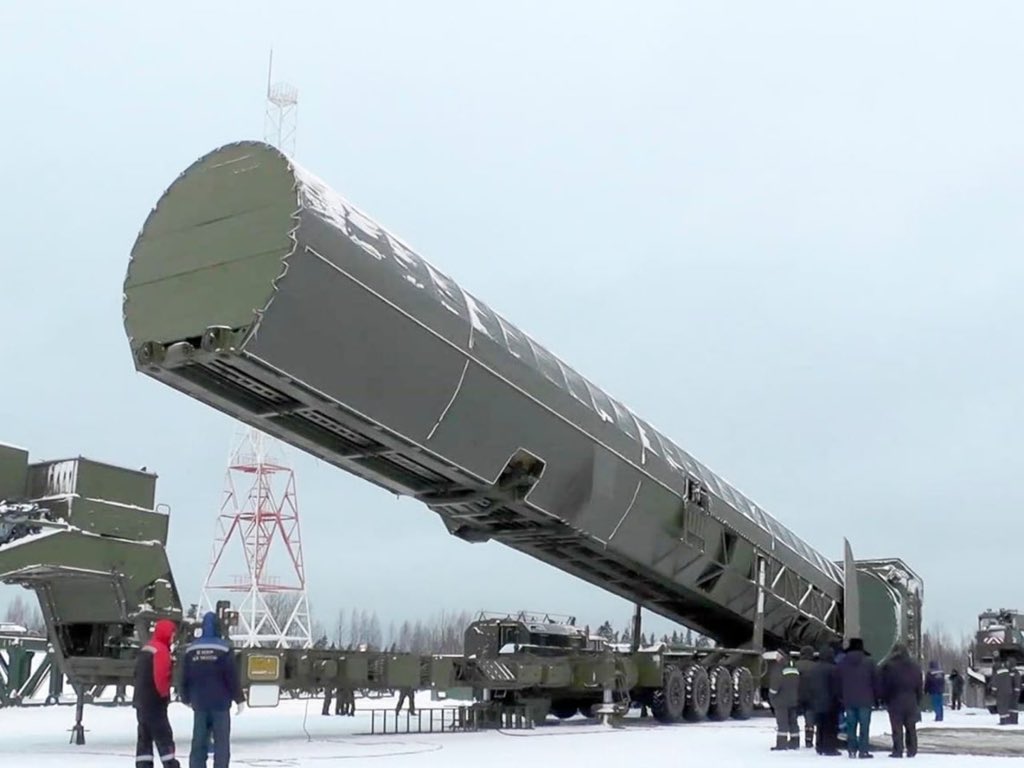Russia’s latest test of the RS-28 Sarmat intercontinental ballistic missile, commonly referred to as “Satan-2” by NATO, failed today, resulting in significant damage to the launch site at the Plesetsk Cosmodrome in the Arkhangelsk region. The missile, intended to showcase the strength of Russia’s strategic nuclear capabilities, reportedly detonated within its silo, causing a massive explosion that left a large crater and destroyed the test facility. This marks the fourth consecutive unsuccessful test of the Sarmat missile, a setback for a system touted as a crucial component of Russia’s defense strategy.

The Sarmat missile, designed to replace its aging predecessor, the RS-36M Voevoda (NATO codename: SS-18 Satan), has been described by Russian officials as one of the most powerful nuclear weapons in the world. Capable of carrying up to 10 large or 15 smaller nuclear warheads along with multiple decoys, it can reportedly reach speeds of up to 19,000 miles per hour. This intercontinental ballistic missile was developed to evade modern missile defense systems, thus enhancing Russia’s nuclear deterrent capabilities.
However, today’s failure raises significant concerns about the reliability of the Sarmat system. While Moscow has consistently promoted the missile as a game-changing asset, technical issues continue to plague the program. The explosion at the Plesetsk Cosmodrome not only represents a major setback for the missile’s development but also highlights broader challenges facing Russia’s military modernization efforts.
The failed test is also a blow to Russia’s strategic messaging, as the Sarmat missile has been central to President Vladimir Putin’s efforts to project military strength. The missile’s ability to carry multiple nuclear warheads and reach targets across the globe, including the United States, has been repeatedly emphasized by Russian officials as a means of reinforcing the country’s position as a leading nuclear power. However, repeated test failures have cast doubt on the missile’s effectiveness and raised questions about the current state of Russia’s strategic arsenal.

While Russia has not officially commented on the specifics of the failed test, the incident will likely fuel further scrutiny of its weapons development programs. International observers and analysts will be watching closely to see how Russian officials respond to this latest setback and whether the technical issues plaguing the Sarmat program can be resolved.
For now, the failure of the RS-28 Sarmat test underscores the difficulties Russia faces in maintaining and advancing its strategic military capabilities. The incident also highlights the ongoing risks of nuclear weapons testing, particularly when involving highly complex systems like the Sarmat missile.
As global tensions continue to rise, incidents like this serve as a reminder of the importance of transparency, reliability, and caution in nuclear weapons development and testing.



